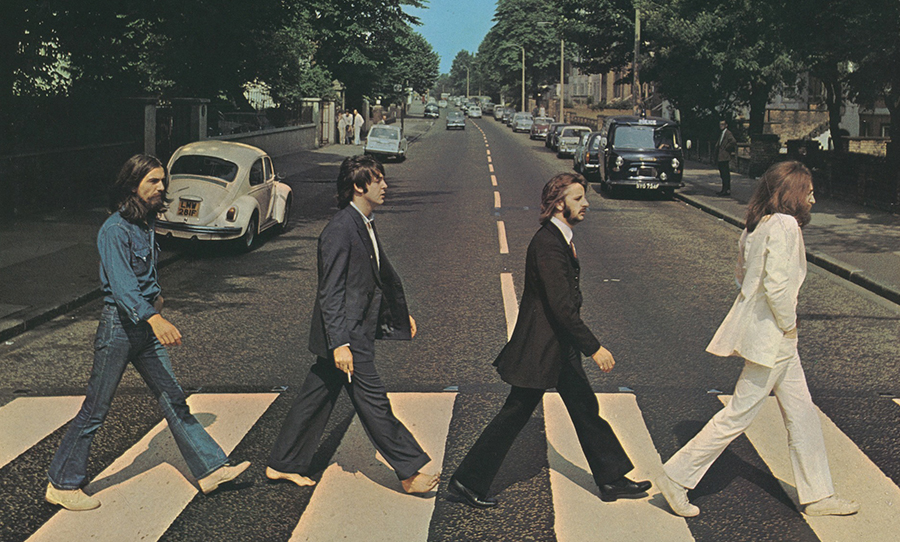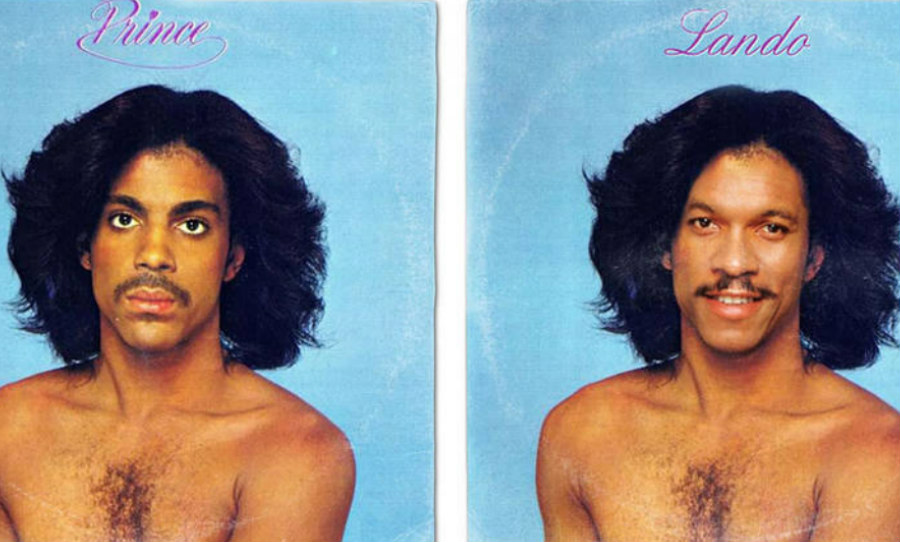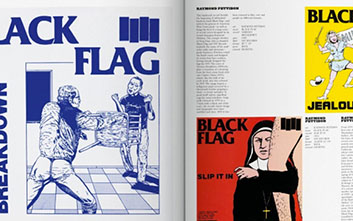From the oft-imitated zebra crossing cover to the beloved b-side medley, Abbey Road remains one of the most beloved and critically lauded albums by The Beatles.
Since the death of the band’s manager Brian Epstein in 1967, tensions began to rise among the band members and lingered within the group for many years to come. Following the tumultuous recording sessions for Let It Be, the four-piece reconvened for what would go on to be their last recorded album. In contrast to the raw, unpolished sound of Let It Be, Abbey Road would demonstrate the maturity, intricate songwriting and innovative production techniques The Beatles had amassed throughout their short yet highly impactful eight-year lifespan.

From state-of-the-art consoles to synthesisers and tape splicing, we delve into the making of Abbey Road, the final studio album recorded by The Beatles.
A Protest To Let It Be
During the sessions for Let It Be, The Beatles maintained a more laid-back approach to recording in comparison to older releases, striving to achieve a more ‘live’ tone for the album. By contrast, Abbey Road was to be a testament to the groundbreaking and meticulous album production that’s scattered throughout The Beatles’ backlog – with a few new innovations sprinkled in for good measure.
Aiming for a dense soundscape for their final studio effort, the four-piece required more substantial equipment than a standard four-track tape machine – something The Beatles used just two years earlier to craft 1967’s Sgt. Pepper’s Lonely Hearts Club Band. Instead, the band opted for eight-track machines during the recording process as to allow for multi-tracking and overdubs, resulting in a fuller, more expansive sound.
Four months before sessions for the new album commenced, the second of Abbey Road Studio’s control room was fitted with the now-famous solid-state console – the TG12345 MK1. In comparison to the tube-driven REDD consoles used by The Beatles on previous efforts, the TG12345 MK1 offered exceptional multi-tracking performance – something integral to the rich scope of Abbey Road and the key to why their last album sounds so starkly different to earlier efforts. Not only that but because the new console curbed low-end distortion, it provided the album with much clearer, warmer bass tones, best demonstrated in the album’s opening track Come Together.
It wasn’t long before everyone in the studio fell in love with the console’s smooth tone and high-end performance. Geoff Emerick, the engineer for Abbey Road, spoke on how the TG12345 MK1 impacted the album’s overall tone; “The new recording console, that specific one, gave the original rhythm tracks a certain texture that wasn’t as aggressive and upfront and hard as the tube desk would have given us. And that sound was well suited to a lot of the songs they brought in for the album. In addition, because the original rhythm tracks were sort of more subdued, the overdubs were a little softer and less harsh as well. Everything sat together a little easier in the mix.”
Get Your Moog On
From mellotrons to sitars and spine-tingling tape loops, The Beatles had always experimented with unique instrumentation within a traditional rock and roll context, and of course, Abbey Road saw the band delve into new and unexplored sonic territories. But their final studio effort saw the band introduce a then-new and cutting-edge device not-yet heard on a Beatles LP – the Moog synthesizer.
George Harrison had acquired one of the first Moog synthesizers ever released in 1968, and the analogue instrument went on to play a crucial role within Abbey Road. More often than not, the synth was used in a textural way in particular tracks. For example, the slow-building white noise that occurs during the last two minutes of I Want You (She’s So Heavy) was produced via the Moog.
It was also used to help create arguably the most inventive production technique on the whole of Abbey Road. During the guitar solo for Octopus’ Garden, an underwater choir can be heard within the mix. This unusual, gurgling effect was produced by running the backing vocal tracks through a compressor coupled with the Moog’s onboard low-frequency oscillator, resulting in the backing vocal’s warbling sound quality.
Of course, Harrison’s Moog was also used in several melodic instances throughout Abbey Road. From the eerie French Horn-esque melody in Because to the short yet sweet solo in Maxwell’s Silver Hammer, the counterpart to McCartney trudging bassline in Mean Mr Mustard and the cheerful ascension of Here Comes The Sun’s bridge, the Moog synthesiser provided multiple tracks on the album with a synthetic allure never heard before on a Beatles LP, and aside from the TG12345 MK1, is the most integral piece of technology to Abbey Road’s fresh tone.
Expanding Their Rock And Roll Core
Never ones content with resting on their laurels, The Beatles consistently explored new genres and sub-genres of music throughout their lifespan. The writing and recording process for Let It Be saw the band focus revisit their blues roots, something that carried through to the production of Abbey Road – in particular, the album’s opening track and the slow-building I Want You (She’s So Heavy).
The Beatles in the past had composed cheerful, nursery-rhyme-like songs for previous LP’s such as Yellow Submarine on 1966’s Revolver – a premise that was again explored on Abbey Road on McCartney’s Maxwell’s Silver Hammer and Starr’s Octopus’ Garden. Other tracks such as Oh! Darling saw The Beatles delve into a more doo-wop style of a ballad – in fact, it took McCartney a week of recording to nail the rough yelp for the track. He would record his vocals first thing in the morning before any other band member arrived because, according to McCartney, he “wanted it to sound as though [he’d] been performing it on stage all week”.
Though perhaps the most stylistically and sonically most unique track on the album that diverts from The Beatles’ rock core is Because. Written by Lennon and inspired by Beethoven’s Moonlight Sonata, the song has a Baroque feel, opening with broken chords played on a nasal harpsichord run through a Leslie speaker, before ushering in a wall of vocals and closing on a Moog solo. The prominent vocal harmony was meticulously crafted by triple-tracking each vocal line, with Harrison singing the lowest register, Lennon tackling the middle register and McCartney with the high register.
A True Collaborative Effort
Contrasting with the band’s earlier efforts that had been largely dominated by the timeless songwriting partnership of Lennon and McCartney, Abbey Road saw Harrison and Starr take on more prominent roles throughout the album.
Aside from his extensive use of the Moog synthesisers, Harrison’s two writing efforts for Abbey Road are considered by many to be two of the best songs on the album; the love ballad Something and the cheerful Here Comes The Sun – both featuring silky smooth guitar work with Harrison’s Rosewood Telecaster running through a Leslie speaker.
Abbey Road also saw the second-ever song solely credited to Ringo Starr – the quirky and charming Octopus’ Garden. Even Starr’s drumming style had evolved over the course of the album, incorporating tom a lot more into his drumming routine.
George Martin also took on a much more prominent role for Abbey Road. Aside from playing the creeping harpsichord in Because, Martin is best known for his role in developing the album’s famous medley. Though it was McCartney’s idea to have a series of tracks that lead into each other, Martin’s precisions tape splicing and editing resulted in arguably the finest 16 continuous minutes of music ever released.
The intricate medley concludes with the grandiose closer The End, a track famous for featuring a solo from each of The Beatles’ four members. Boasting Ringo Starr’s first and only drum solo for the band, the track includes a sequence of rotating solos from the three remaining members, with Lennon and McCartney both opting to use an Epiphone Casino for theirs, while Harrison played his parts using his wine red Les Paul, Lucy.
While the album initially received mixed reviews following its release on September 1969, Abbey Road has since gone on to become one of the most beloved Beatles albums, with many fans claiming it as the band’s greatest effort. From the iconic sleeve imagery, the innovative use of synthesisers to the dense songwriting and Martin’s exceptional, layered production, the album is an ode to the studio that catapulted four young Liverpudlians into the rock and roll history books.


